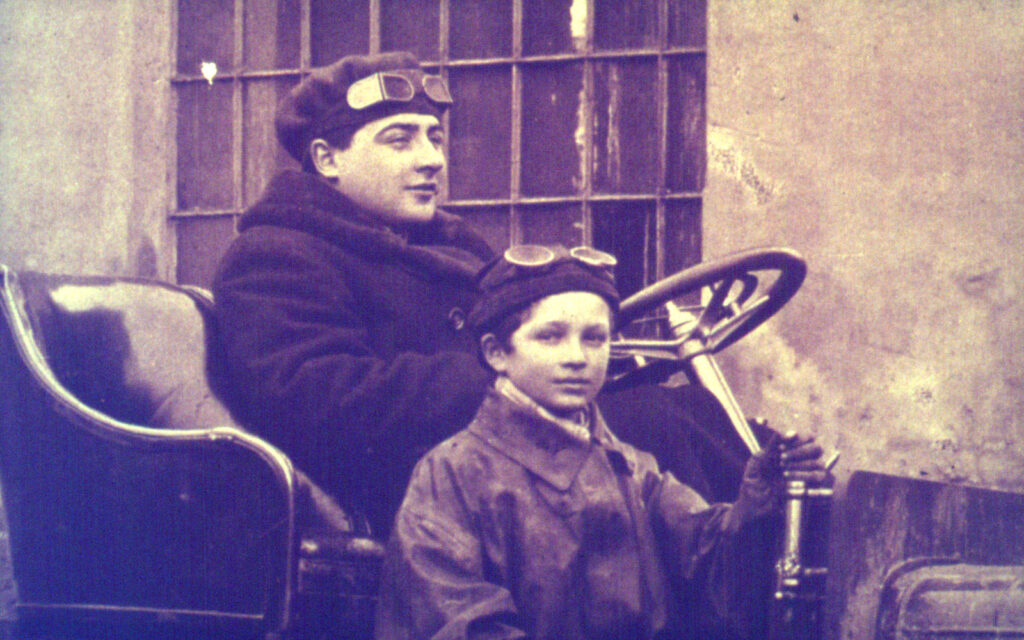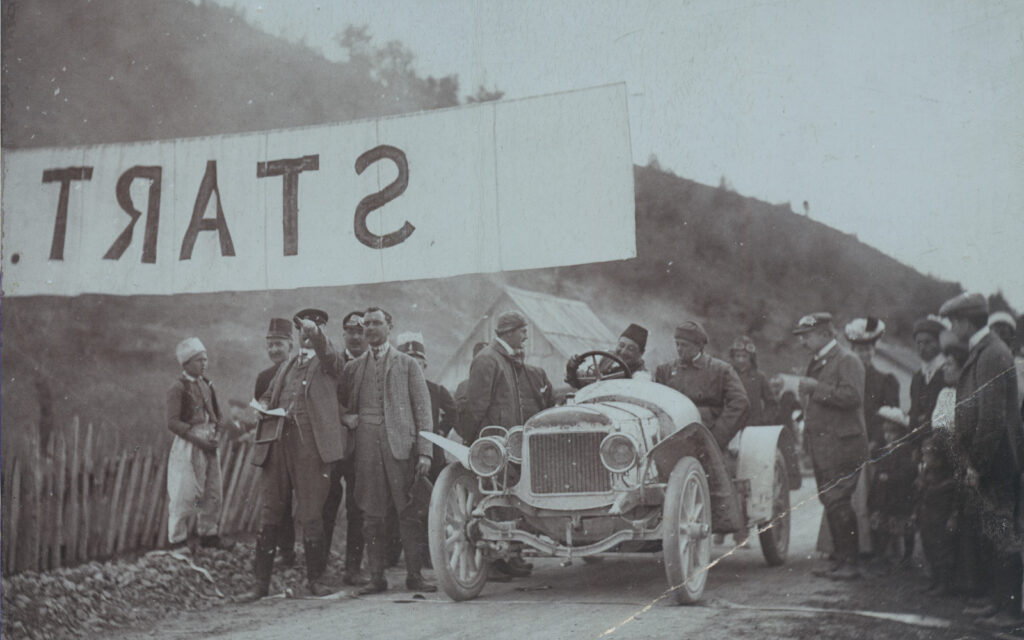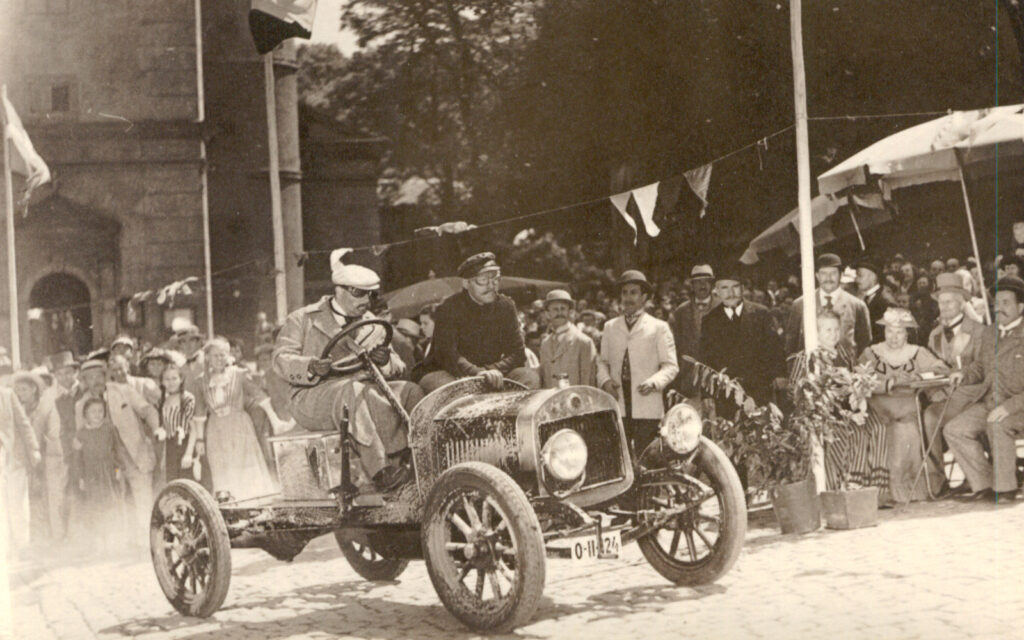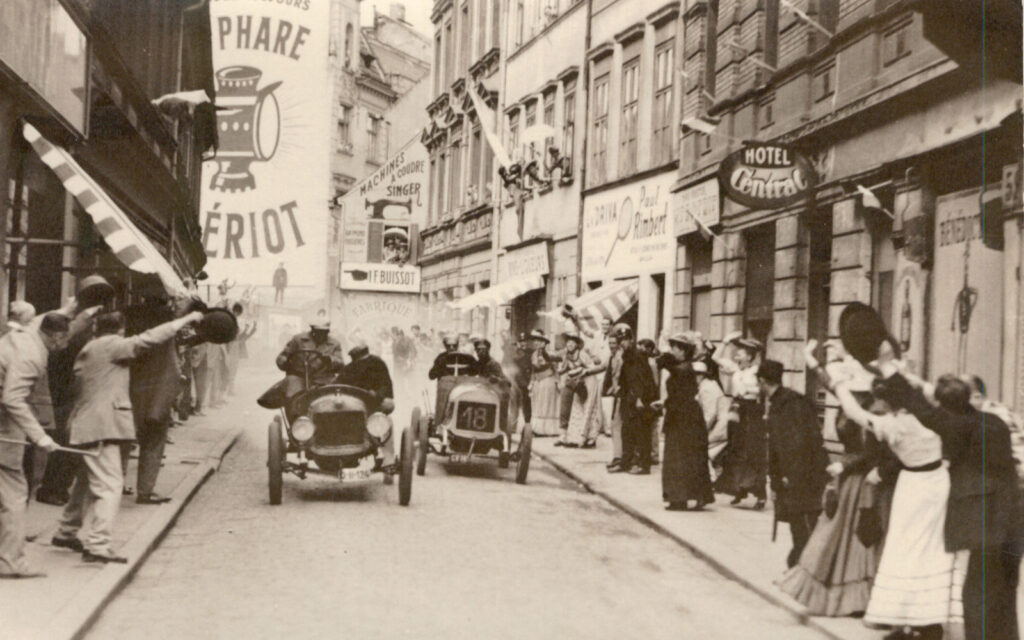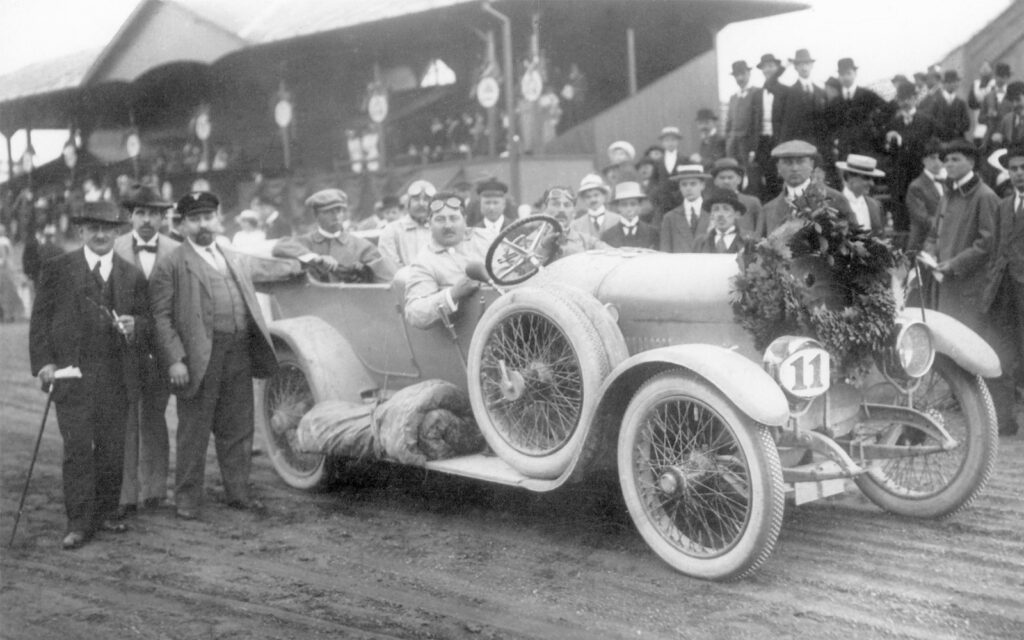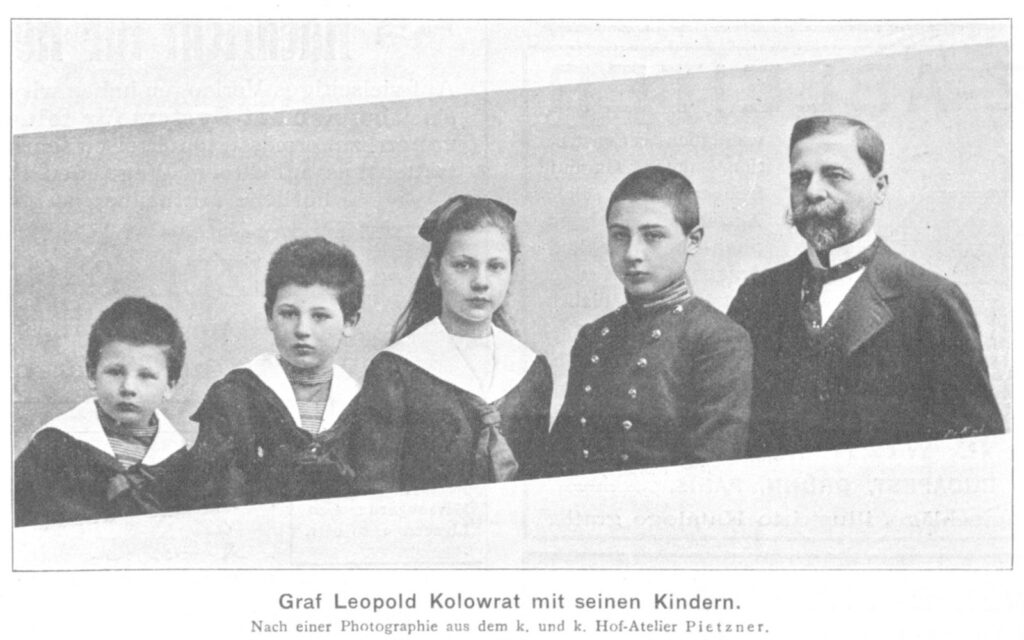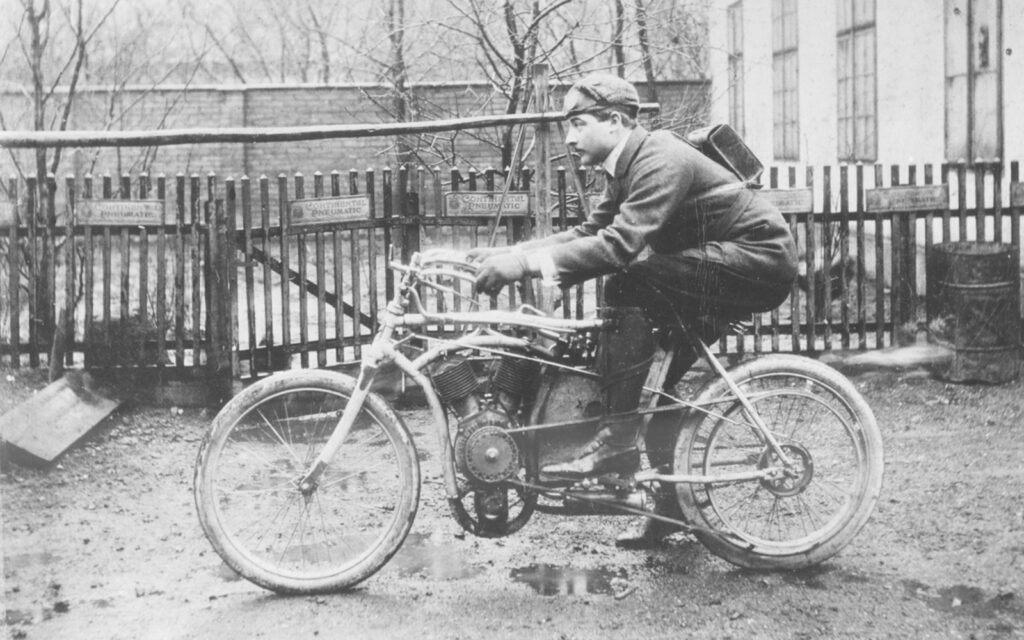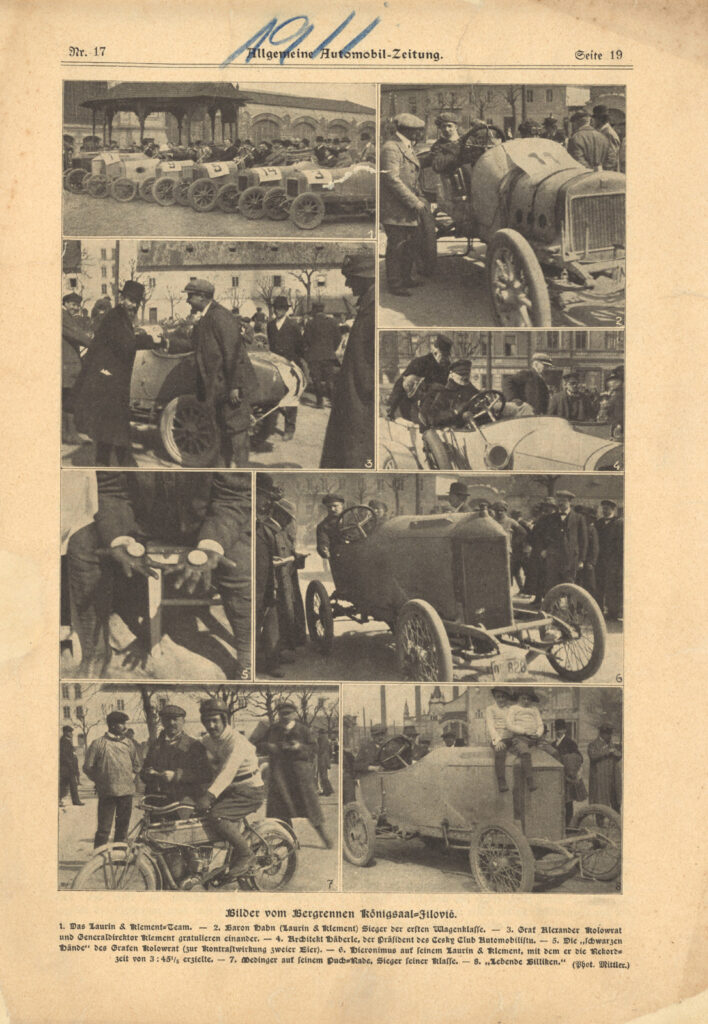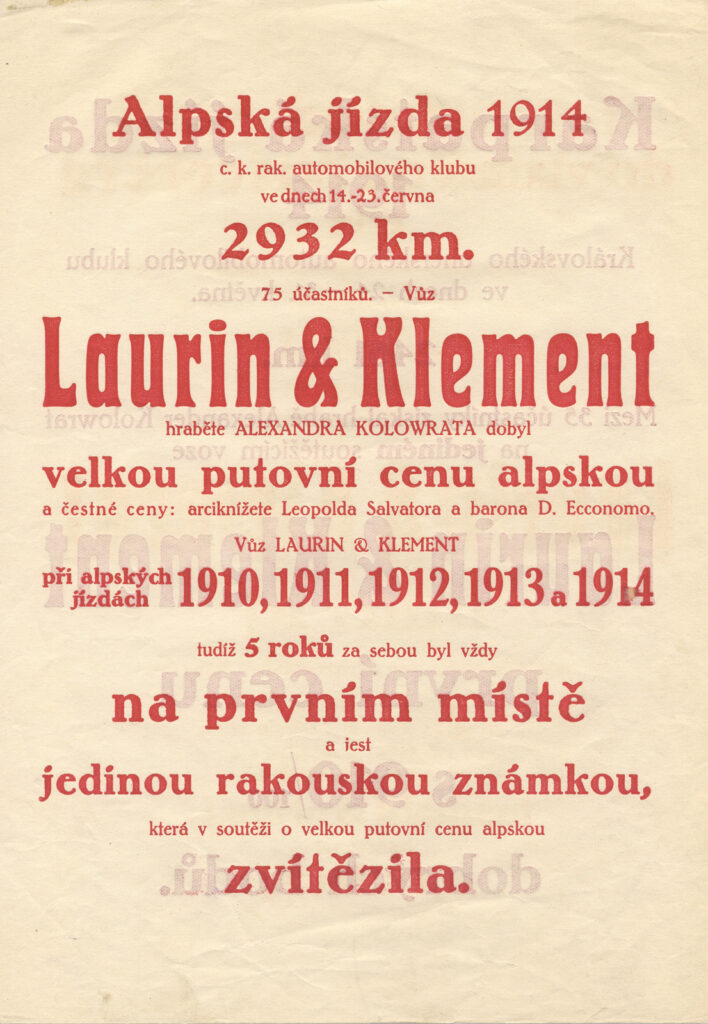Famous racing drivers: Saša Kolowrat-Krakowský
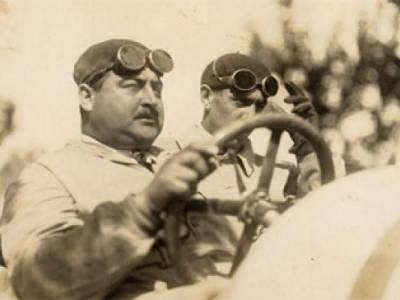
Just 130 years ago, on the 29th of January 1886, in United States of America, was born one from the most successful and charismatic racing drivers of the last century: Czech Count Alexander Joseph Kolorat-Krakowsky, the ” Popular Saša”.
It’s been said of him, that he had a Southern temperament, Viennesse charm and Czech sense of humour. He has been known not only for his achievements over the handlebars and steering wheel racing machines of the Laurin & Klement company, where he incidentally joined the Governing Board. The Count later commissioned Ferdinand Porsche by the construction of the light special Saša deployed among with the other things in Targa Florio in the 1922. Kindheahrted chubby Kolowrat was one from the first aviators in the Austria-Hungarian Empire. He also became a master of propaganda through the First World War and in his film studios the likes of Marlene Dietrich, Anny Ondra and Casablanca director Michael Curtiz began thier carrers.
Do you wonder why Saša Kolowrat was born in Glen Redge (New Jersey, USA)? His father shot the Prince Auersperg in a duel and because the Emperor had banned the similar shedding of blue blood, Leopold Kolowrat had to escape to America. He started farming there, got married to the daughter of a successful businessman of smoking materials. When his oldest son was one and half years old, Kolowrats returned to the family estate in Týnec of Klatov. Unfortunately the castle was on a long-term lease, so Saša for first five years was raised in the local parish and grow up with Czech children.
The estate was in the red until 1900, then his father Leopold could afford their first car. Overtime Leopold became the Vice-chairman of the Austrian Automobile Club and moreover he become a shareholder in the Laurin & Klement company. As a student, Saša lived very close to the Mladá Boleslav workshop as the nearby estate Košatky belonged to Kolowrat’s too.
The first-cylinder engine motorcycle L&K he got from his father immediately after graduating and in October 1904 competed in the race Praha-Písek. He finished ninth, still under his transparent pseudonym Alexander Klatovský. His parents didn’t want him to race, because according to them, he should concentrate on the study of Economics. In 1906 at the uphill race in Semmering Spa in Austria he set the best time in the motorcycles category up to 65kg. In the previous season he already came here to gain experience in the four-team L&K led by the winner Vaclav Vondřich.
Kolowrat’s successful debut behind the wheel is also connected with Semmering: in 1907 he was with this type of the car, the FC was the fastest in the class up to 2000 cm3. He also won the first year of uphill race Zbraslav – Jíloviště (1908) in the two-liter category. He thoroughly lightened a special car, probably one of the first type of FC, by dismantling the larger parts of it’s body. He replaced the seats with the wicker chairs and due to his portly physique he chosen his just eleven years old brother Jindřich as a passenger.
He set off for Channel La Manche in September to join the English Brooklands racetrack with banked turns, where he broke the world speed record in the category of four-cylinder engines with bore up to 86 mm. Because the Count was a bit chubby, he managed to reach only 112 km/h at the one mile timed section. Finally the slim Otto Hieronimus added the Laurin & Klement brand in to history by achievement of 118,72 km/h.
In the prestigious Jindřich route (1842 km from Berlin via Vratislav, Budapest and Vienna up to Munich), Kolowrat triumphed in 1909 over 102 competitors. In the following years he succeeded also at the Alpine route. At this challenging sport event, whose participants were exceeding the dreaded mountain passes, including the Austrian Katschberg, the Kolowrat managed to win the first time (1910). In the years 1912, 1913 and 1914 he finished without any penalty points. He also gave a high sport performance in the competition through the challenging field from Saint Petersburg to Sevastopol in 1911, where he helped the team to a victory for L&K and after that won a two day race of Caucasian Cup. In return the export to Czar Russia grew up to a one third of it‘s production of Mladá Boleslav automobile company. In 1913 Kolowrat proved the reliability of his private sport car, which at that time had already mileaged 50,000 km by winning in the competition from Tatras mountains to Adriatic sea. Already popular Saša started a promising season in 1914 with the triumph at the Carpathian route on the L&K, the type M and also on the Alpine route. However the 28th of June the Sarajevo assassination of the heir for the Austro-Hungarian throne and his Czech wife prematurely ended the race. The First World War started.
The young Count Kolowrat with his strong charisma along with the democratic motions and knowledge of the Czech language and environment, managed to gain the sympathy of his colleagues. When the pre-race work on a new car was going on, apparently he ordered a large amount of food and drinks and worked with the mechanics through the night. It was said that between him and them he was recognised mainly by the fact that after installation he walked away from the workbench perhaps more grubby than the others.
It didn’t stop him to wear the formal attire and the hat, at that time a necessary accessory, to represent the Laurin & Klement Company. One of his colleagues in the Governing Board was for example ”the King of buttons”, the entrepreneur Jindřich Waldes (Koh-i-noor). Even when Saša Kolowrat became a citizen of Czechoslovakia and during the internships in the USA intensively studied local industry; he still retained the ownership stake after the First World War. Following the fire in the factory in Laurin & Klement in 1924, Saša was supposed to be considering to take over the company. In the end he managed to find a strategic partner – Skoda Company in Plzeň.
In 1910 he became a head of the Kolowrat-Krakowský family. He also tried his hand at balloon flights and became the fourteenth citizen of Austria-Hungary to obtain a pilot’s licence. At the same time at his castle Velké Dvory u Přimdy the film studios ”Sascha-Filmfabrik” were built. Dangerous work with highly flammable chemicals and nitrocellulose films led a few months later to a fire in the building. Kolowrat won the prestigious contract for the Habsburg imperial family and in 1912 he finally moved from the castle Diana u Přimdy to a Vienna. As a matter of fact, 150 from 400 movie theatres worked throughout the monarchies! His company had produced approximately 30 silent films, including and unfortunately unpreserved shots of Mladá Boleslav car company.
During the First World War Kolowrat joined automobile force, but after a quarter of a year, he began shooting newsreel and in the second year of the war, became the head of the film department of military press centre. In 1916 he let the rebuild of the air shed to the first film studio in Austria-Hungary. Until his untimely death, he filmed newsreels, cartoon and also the epic historical epics.
Kolowrat’s business talent was also expressed in the way, how smartly he managed only in few weeks after the First World War, to achieve a representation of studios Paramount for Austria and later on to push his own movies for American distributions. The supply of dollars made him enable to overcome the critical period when the shattered economy was crushed by the hyperinflation of defeated Austria and Germany. In all cases were the silent pictures, the movie with the sound in America came at the time, when the ”Movie Count” in Vienna was dying.
In 1927, Kolowrat at that time forty one, who was famous for his iron health, started to have an indigestion problem. He was accompanied by jaundice, which even the stay at the Karlovy Vary didn’t slow it down. During the operation was found a pancreatic cancer, which is difficult to treat until today. The short-term improvements came after a stay at the spa Semmering near Vienna, where he was racing five years previously. On Sunday, the 4th of December 1927, Alexander Kolowrat-Krakowský died in Vienna. However he is buried in a family tomb in Týnec at Klatov, where you can occasionally come to honour his big name.
